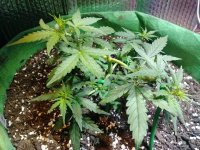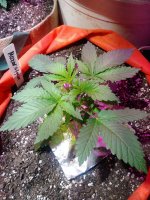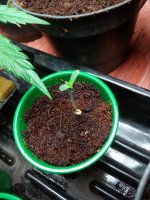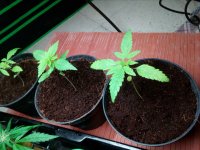BudBoy2
Well-Known Member
Hey there my friend, have you tried to scarify the seeds prior to glass of water or paper towel? What i mean is to score the seeds on some light sand paper or put in a glass with sand in it and shake it a bit. This helps get the mother nature coating that it puts on the seed off of it which in turn helps it to germinate. try it!!..ok so i have the candy cane strain from crop king seeds and they have a 92 % germination rate ok so tell me wtf why cant i get any of them to grow like day 6 and im pretty sure i kill them all had one with a tap root in a good soil but somhow it rose to the top with the root showing first like i took it out and put it back into the paper towel method the other 4 have been germinating for a week now and nothing im getting new seeds tommorow but like im almost willing to give up idk what to do anymore please help me my seeds arnt doing anything they should be doing like in all these damn videos i see where the dam root is showing after being in a cup of water for 16 hours like i did everything this card is telling me to do and i feel like im wasting money sorry about the rant but please please help!!!








